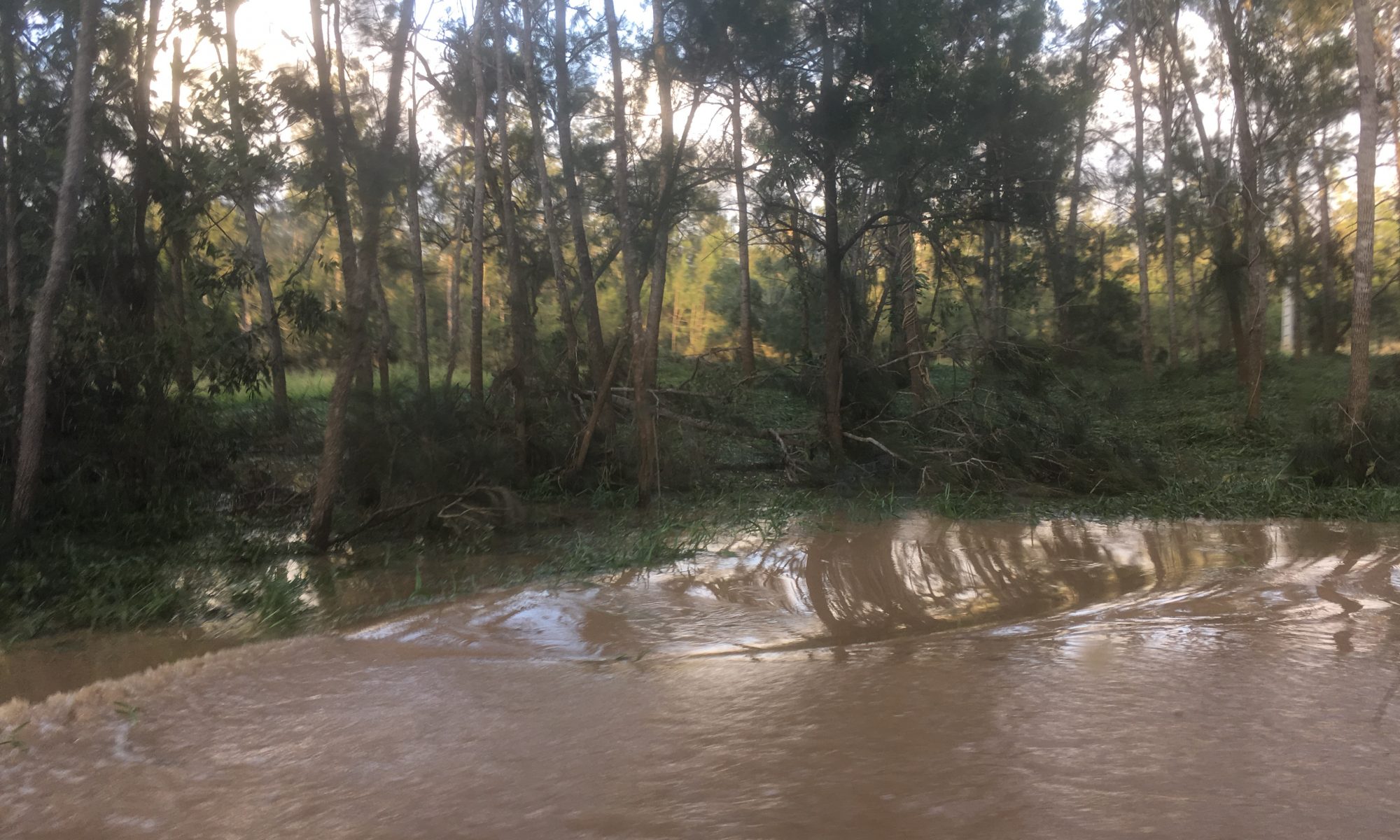SpiRAL : Sols, pluie et Leptospirose
Le projet SpiRAL a reçu le soutien financier de l’Agence Nationale de la Recherche (ANR) pour la période 2020-juin 2023. Il associe l’UREL et des collaborateurs de l’Université de la Nouvelle-Calédonie (ISEA) de l’Institut de Recherche pour le Développement (UMR Hydrosciences et IMPMC) et de l’Institut Pasteur (Biologie des Spirochètes).
Son ambition est de décrire les déterminants telluriques et hydrologiques qui expliquent la survie environnementale et la dispersion des leptospires pathogènes à l’origine des cas humains de leptospirose. Le résumé du projet est présenté ci-dessous.
La leptospirose est une maladie bactérienne grave ayant un impact maximal en zone tropicale. Des données récentes montrent une incidence croissante en Europe (France, Belgique, Croatie, Pays-Bas). La leptospirose affecte 1 million d’humains par an, en tuant 58 900, mais reste négligée. Noguchi a défini dès 1918 son épidémiologie et pointé l’importance de la survie environnementale des pathogènes. Les leptospires colonisent chroniquement les reins de mammifères et sont éliminés dans l’environnement, où les humains s’infectent. Les interactions entre animaux, environnement et homme déterminent l’épidémiologie de la maladie. Comprendre l’écologie des leptospires dans l’écosystème est donc essentiel. Pourtant, la leptospirose a surtout été étudiée comme zoonose; les déterminants écologiques de sa transmission n’ont pas été un domaine de recherche actif. Des travaux anciens ont identifié les conditions de survie de Leptospira; toutefois, ces résultats doivent être réexaminés. On suppose que les pathogènes ne font que survivre dans l’environnement; aucune forme de résistance n’a pourtant été mise en évidence. La capacité de l’environnement à assurer la survie des leptospires est une pierre angulaire de l’épidémiologie de la leptospirose.
SpiRAL vise à définir l’habitat de Leptospira hors d’un hôte. Ses objectifs sont (1) identifier les facteurs abiotiques influant sur la survie de Leptospira dans les sols et l’eau douce, (2) caractériser le microbiote qui abrite Leptospira dans l’environnement (3) modéliser la dynamique de la dispersion de Leptospira lors de pluies et (4) générer une carte spatiale du risque intégrant des paramètres environnementaux, écologiques et climatiques. Cette approche holistique de la composante environnementale de la maladie apportera des connaissances et pistes pour sa prévention, et pourra servir de modèle pour d’autres infections transmises par l’environnement.
SpiRAL bénéficiera de l’expertise en Nouvelle-Calédonie dans les domaines de la leptospirose et des sciences du sol. Une connaissance complète des habitats environnementaux de Leptospira sera acquise, nécessitant une quantité importante d’informations sur les écosystèmes permettant leur survie. D’abord, une collection de sols et de sédiments géoréférencés sera prélevée et caractérisée (physico-chimie des sols, présence de leptospires in situ, microbiote procaryote et eucaryote). Leur capacité à soutenir la survie de Leptospira sera évaluée in vitro en microcosmes. L’interaction des leptospires avec les particules du sol, avec des Amibes libres environnementales ou dans les biofilms sera étudiée, permettant de mieux comprendre leur mode de vie. Profitant d’un site équipé pour l’hydrologie, SpiRAL étudiera et modélisera la dispersion de Leptospira pendant les pluies, déclencheurs connus de leptospirose. Le modèle sera établi dans le bassin versant pilote, puis évalué dans d’autres zones de forte incidence. Les informations acquises sur la dynamique de Leptospira dans l’eau lors des pluies révèleront des mesures préventives. Les données de SpiRAL ainsi que les facteurs de risque connus seront analysés pour établir et évaluer une carte spatiale du risque. Ce modèle sera utilisé pour étudier la pondération relative des facteurs de risque et pour traduire les résultats de la recherche en actions pour la santé.
SpiRAL vise à fournir une compréhension complète de l’écosystème dans la persistance et la dynamique de l’exposition à la leptospirose. Il comblera des lacunes de connaissances sur le mode de vie de Leptospira en dehors d’un hôte, déterminants clés de la maladie humaine, et fournira un vision intégrative, complète, riche et généralisable sur l’habitat environnemental de Leptospira. En changeant le paradigme d’une zoonose à une infection transmise par l’environnement, SpiRAL vise à mieux comprendre l’épidémiologie et à déduire des stratégies de gestion du risque pour mieux contrôler la leptospirose.
SpiRAL: Soil, rainfall and Leptospirosis
The SpiRAL project has been granted financial support by the French National Research Agency (ANR) for the period 2020-June 2023. It involves the UREL and collaborators from the University of New Caledonia (ISEA), the Institut de Recherche pour le Développement (UMR Hydrosciences and IMPMC) and the Institut Pasteur (Biology of Spirochetes).
Its ambition is to describe the telluric and hydrological determinants that condition the environmental survival and dispersal of pathogenic leptospires responsible for human cases of leptospirosis. The project summary is presented below.
Leptospirosis is a severe bacterial disease with highest impact in the Tropics. Recent data show a growing incidence in Europe (France, Belgium, Croatia, the Netherlands). Leptospirosis affects 1 million humans yearly, killing 58,900, but remains neglected and attracts insufficient attention. One century ago, Noguchi outlined its epidemiology and pointed the role of the survival of leptospires “in nature”. Leptospires chronically colonize the kidneys of mammals and are shed in the environment, where humans get infected. Animal-environment-human interactions determine patterns of disease; thus understanding the ecology of leptospires in ecosystems is critical. Yet, leptospirosis has mostly been studied as a zoonosis; environmental determinants of transmission have not been an active field of research. Early work identified conditions for Leptospira survival; however, recent work show that assumptions need be revisited. It is assumed that pathogens only survive in soil or freshwater; yet no resistance form was ever evidenced. The ability of the environment to support the survival of leptospires is a cornerstone of leptospirosis epidemiology.
SpiRAL aims at filling the gaps in knowledge of Leptospira habitat outside a host. SpiRAL goals are to (1) identify the environmental abiotic factors that impact Leptospira survival in soils and freshwater, (2) characterize the microbiota that shelter Leptospira in the environment (3) model the dynamics of Leptospira dispersion upon rainfall and (4) generate a spatial map of leptospirosis risk integrating environmental, ecological and climatic parameters. This holistic approach of the environmental component of leptospirosis will yield new knowledge and avenues for a better control of the disease, also making the case for other environment-borne infections.
SpiRAL will take benefit of the expertise developed in New Caledonia in the fields of leptospirosis and soil sciences. A full knowledge of Leptospira environmental habitats will be acquired, requiring a substantial amount of information on the ecosystems allowing or oppositely impairing their viability. First a collection of georeferenced soils and sediments will be collected and characterized (physical and chemical soil analysis, presence of virulent leptospires in situ, prokaryotic and eukaryotic microbiota). Their ability to support the survival of Leptospira will be assessed in vitro using microcosms. The interaction of pathogenic leptospires with soil particles, with Free-Living Ameoba or in natural biofilms will also be studied, providing further insight into their environmental lifestyle. Taking benefit of a site fully equipped for hydrology, we will also study and model the dispersion of Leptospira during rainfalls, known triggers of leptospirosis outbreaks. The model will be established in the pilot watershed then evaluated in other areas of high incidence. The information gained on Leptospira dynamics in water under the influence of rain will prove for prevention. Data of SpiRAL together with known leptospirosis risk factors will be analyzed spatially to establish and evaluate a spatial map of disease risk. This model will be used to study the relative weights of risk factors and to translate research findings into health benefits.
SpiRAL aims to provide a comprehensive understanding of the ecosystem in the persistence of- and dynamics of exposure to- leptospirosis. It will address knowledge gaps on basic aspects of Leptospira lifestyle outside a host, key determinants of human disease, and will provide an integrated, data-rich and comprehensive and generalizable picture of Leptospira environmental habitat. Shifting the paradigm of leptospirosis epidemiology from a zoonosis to an environment-borne infection, SpiRAL aims to better understand epidemiology and infer risk management strategies for a better control of the disease.
Publications UREL liées / Related publications from UREL
Leptospira interrogans retains direct virulence after long starvation in water.
Current Microbiology. Site de l’éditeur
The zoonotic pathogen Leptospira interrogans mitigates environmental stress through cyclic-di-GMP-controlled biofilm production.
NPJ Biofilms Microbiomes. 6(1):24 Texte intégral/Full text
A systematic review of Leptospira in water and soil environments
Bierque E, Thibeaux R, Girault D, Soupé-Gilbert ME, Goarant C (2020)
PLoS One 15(1):e0227055.
Texte intégral/Full text Version pdf
Leptospira and leptospirosis
Goarant C, Trueba G, Bierque E, Thibeaux R, Davis B, De la Peña Moctezuma A (2019)
In: J.B. Rose and B. Jiménez-Cisneros, (eds) Global Water Pathogen Project. ( A. Pruden, N. Ashbolt and J. Miller (eds) Part 3 Bacteria) Michigan State University, E. Lansing, MI, UNESCO.
http://www.waterpathogens.org/book/Leptospira-and-leptospirosis Version pdf
Revisiting the taxonomy and evolution of pathogenicity of the genus Leptospira through the prism of genomics
Vincent AT, Schiettekatte O, Goarant C, Neela VK, Bernet E, Thibeaux R, Ismail N, Mohd Khalid MK, Amran F, Masuzawa T, Nakao R, Amara Khorba A, Bourhy P, Veyrier FJ, Picardeau M (2019)
PLoS Negl Trop Dis 13(5):e0007270. Texte intégral/Full text Format pdf
Biodiversity of environmental Leptospira: improving identification and revisiting the diagnosis.
Thibeaux R, Girault D, Bierque E, Soupé-Gilbert ME, Rettinger A, Douyere A, Meyer M, Iraola G, Picardeau M, Goarant C. (2018)
Frontiers in Microbiology 9: 816. doi: 10.3389/fmicb.2018.00816. Texte intégral
Deciphering the unexplored Leptospira diversity from soils uncovers genomic evolution to virulence.
Thibeaux R, Iraola G, Ferrés I, Bierque E, Girault D, Soupé-Gilbert ME, Picardeau M, Goarant C. (2018)
Microbial Genomics 2018:4. doi: 10.1099/mgen.0.000144. Texte intégral
Seeking the environmental source of Leptospirosis reveals durable bacterial viability in river soils.
Thibeaux R, Geroult S, Benezech C, Chabaud S, Soupé-Gilbert ME, Girault D, Bierque E, Goarant C. (2017)
PLoS Negl Trop Dis 11: e0005414. Texte intégral/Full text


